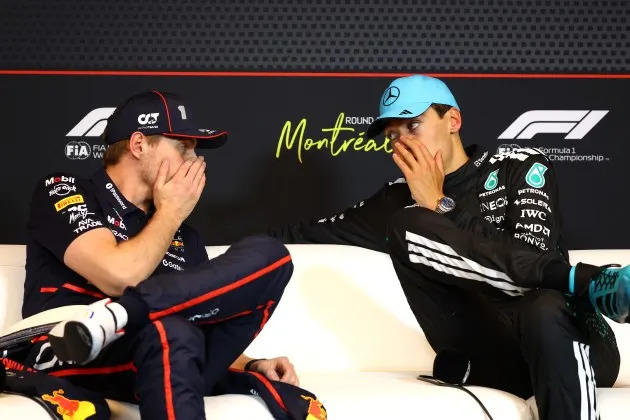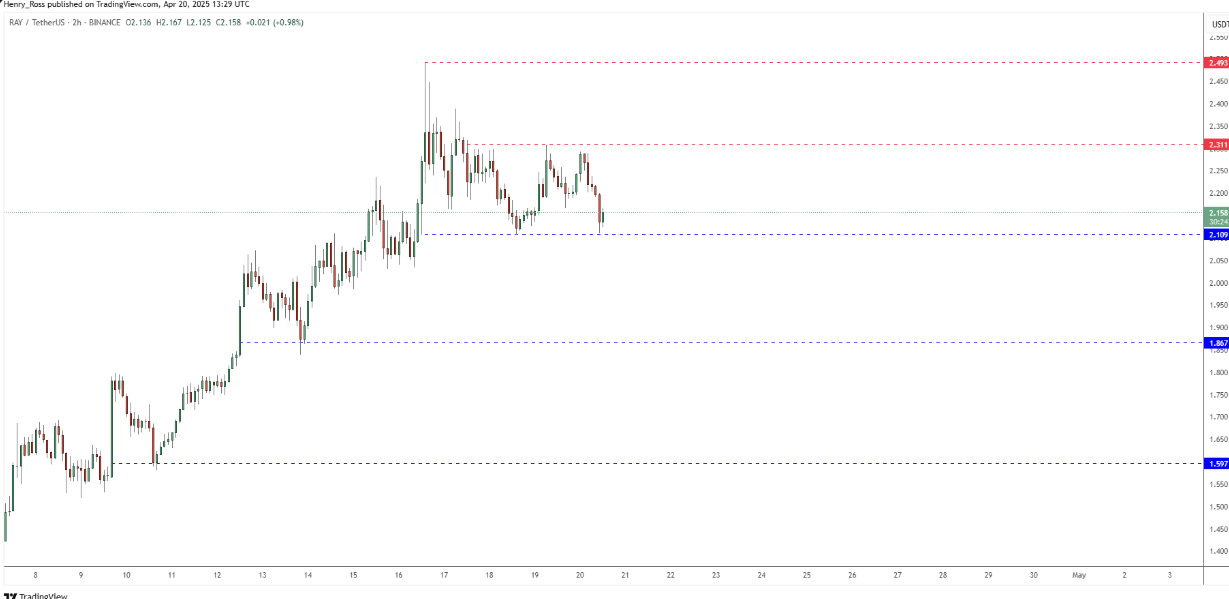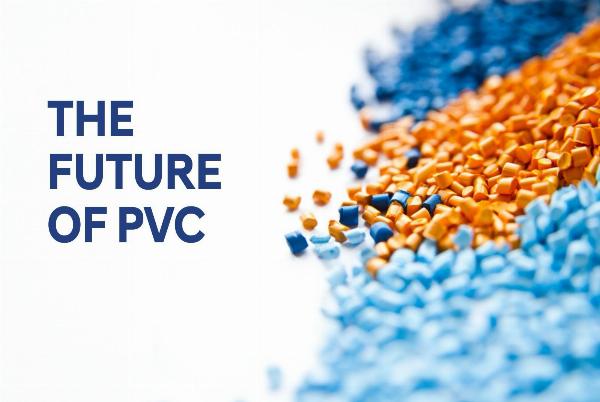The Hidden Appeal of F1? It’s the Original Reality Television
 Yahoo is using AI to generate takeaways from this article. This means the info may not always match what's in the article. Reporting mistakes helps us improve the experience.Generate Key Takeaways
Yahoo is using AI to generate takeaways from this article. This means the info may not always match what's in the article. Reporting mistakes helps us improve the experience.Generate Key Takeaways
Over the past few months, with the Brad Pitt movie F1 approaching and then overtaking the box office (it just passed $100 million in only its second weekend of release) we longtime fans of the sport have found ourselves trying to explain the appeal to some of our F1-skeptical fellow Americans.
What is it that makes you so enthused, they ask. Is it the exotic locales? The death-defying speeds? The high-end branding? The machine fetishization?
More from The Hollywood Reporter
'One Flew Over the Cuckoo's Nest' TV Series, Told Through the Eyes of Chief Bromden, in the Works
'The Visitor': Vytautas Katkus' Feature Directorial Debut Is a Cinematic Meditation on Solitude
Michael Douglas Says U.S. Is "Flirting With Autocracy," People Enter Politics Now "to Make Money"
AdvertisementAdvertisement#«R26ekkr8lb2m7nfddbH1» iframe AdvertisementAdvertisement#«R46ekkr8lb2m7nfddbH1» iframeAll of these factors compel a little bit, of course, as does in-race tire strategy.But the real secret to why many Formula One fans devour the sport, as we will again when the British Grand Prix at Silverstone motors off on Sunday, is much sneakier: it’s reality television.
I don’t mean that in the metaphoric sense of “it has excitement the way reality television has excitement.” Or, “it’s unscripted the way reality television is (pretends to be) unscripted.” I mean that in a far more literal way. All the conventions, all the conceits, that makes us love Real Housewives or Love Is Blind or The Traitors play out on F1’s perpetual multi-screen drama.
The 24 Grand Prixes that happen around the world every few weeks are the new episodes, of course. But the true sizzle happens before and after races, when various drivers and team principals (they’re the coaches) offer provocative disses about other teams, try to sign drivers from other teams, explain why they weren’t trying to send the other teams into a wall at 220 m.p.h. Such out-of-competition drama is the kind of thing that doesn’t happen in other sports — or if it does, it happens as a one-off, not as a regular event and certainly not as a main selling point.
The best analogy I can really come up with is wrestling, with its subplots and subtexts that exist well outside the ring. Of course, all that is plotted out. F1 offers the drama of Gunther and Sami Zayn going at it, except no one here is handing out any scripts.
AdvertisementAdvertisement#«R2bekkr8lb2m7nfddbH1» iframe AdvertisementAdvertisement#«R4bekkr8lb2m7nfddbH1» iframeConsider the ongoing saga between Christian Horner, team principal at Red Bull, and various other team principals, like Mercedes’ Toto Wolff and McLaren’s Zak Brown.
Horner doesn’t much like Brown. You know this because Horner hascalledBrown a “prick.” Wolff doesn’t like Horner, which you know because Wolffcalled him“petty and childish” after Horner filed an appeal following the Canadian Grand Prix last month, which itself followed Mercedes driver George Russell trying to bait Red Bull’s Max Verstappen into a suspension-worthy on-course penalty late in the race, which itself followed Verstappenallegedly threatening to crash into Russell in Qatar last year, which itself followed… You get the idea. Bayleigh and Tyler from Big Brotherwould be proud.
Also, an abundance of overheard dialogue — via in-race radios, microphones in winner’s rooms and other venues — scraps the typical managed style of American athlete access and ensures the airing of many candid thoughts; these are strangers picked to work together and have their lives taped.
(How many F1 fans there are in the U.S. is hard to know, but the number is growing. Some three million peoplewatchedlast year’s Miami Grand Prix, the most ever Americans who tuned in. Formula One, for what it’s worth,counts45 million Americans in its “fanbase,” and says half of them began tuning in within the last five years. Netflix’s pandemic-era hitDrive to Surviveof course played a big role, but its numbershave been dropping. The Pitt movieaims to turbocharge them.)
AdvertisementAdvertisement#«R2hekkr8lb2m7nfddbH1» iframe AdvertisementAdvertisement#«R4hekkr8lb2m7nfddbH1» iframeThe drama will continue Sunday, as all-timer Lewis Hamilton will try to notch his first GP win since heshockingly announced early last seasonhe was leaving Mercedes for Ferrari — aKristen-sleeping-with-Jax-and-screwing Stassi-level betrayal to some. Hamilton haswon more F1 racesthan any driver in history, and won Silverstone nine times. But he’s starting fifth and is a decided underdog Sunday. (Hamilton’s drama this season has been with his team principal, whom he sarcastically told to “take a tea break while you’re at it” mid-race when the principal didn’t answer quickly enough on whether he would order teammate Charles LeClerc to let Hamilton pass.)
Anyone who’s bingedDrive to Survivequickly grasps F1’s Bachelor-y pleasures. The show gleefully accentuates reality-television moments, between and within teams. Watch in season one as Horner (the Tamra of the series) fights with leaders of his then-engine supplier Renault. Or in season seven, when McLaren’s Brown asks one of his two drivers, the champion Lando Norris, to slow down and let his teammate Oscar Piastri pass so he can win the Hungarian Grand Prix —a kind of outrageous request that is like, well I can’t even think of anything else it’s like in other sports. When the Netflix camera does an abrupt zoom-in on Norris as he’s talking to his friend about the controversy afterward you can almost feel the 30 Rock Queen of Jordanvibes.
But the truth is for all the ways Netflix has leaned in to (or, as some have charged,contrived)these moments, producers really were just picking up on what was already there. Formula One has alwaysbeen driven by the pistons of reality television, amazingly many years before the genre was even invented. More than a decade ahead of Kimmi and Aliciafighting on Survivor season two, the F1 legends Alain Prost and Ayrton Senna were fighting in multiple F1 seasons in a way that would make Jeff Probst blush.
“He’s behaving like a coward,” Senna would say about Prost. “It’s become absolutely impossible to work with Ayrton,” Prost would say about Senna.(They were actually teammates in the late 1980’s with McLaren, which only seemed to make their rivalry worse.)
AdvertisementAdvertisement#«R2mekkr8lb2m7nfddbH1» iframe AdvertisementAdvertisement#«R4mekkr8lb2m7nfddbH1» iframeFans of the2013 Ron Howard movieRushknow that even this OG square-off was preceded by plenty of backbiting between the playboy Brit James Hunt and the buttoned-up Austrian Niki Lauda a decade earlier who, even more than Senna and Prost, had wildly different personalities and driving styles.
At least those drivers shared a grudging respect. A few years ago, when the young Huntian Brit George Russell ran the Laudian Finn Valtteri Bottas off the road at the Imola Grand Prix in a brutal crash, the two drivers came together… not to check on each other, but for Bottas to give Russell the finger and Russell to smack him on the helmet. On-course. Mid-race. This is Real Housewives with motor oil.
Like reality television, part of the reason for the combustibility is the fitting of so many egos in a tight space. Literally, with some of the narrow passes on various courses. But also figuratively. All F1 teams have exactly two drivers, which means that there is really only room for one top competitor between the two egos —the kind of math that makes for mayhem. Nearly all other sports lack such a dynamic; they’re either team games or lone endeavors.
Even structurally, F1 teammates are not really that, as while they compete against all the other teams for an end-of-season team championship known as the “constructor’s” they’re also competing within the team for top-three “podiums” and points that count toward the end-of-year “driver’s championship” and its chance for an athlete to either solidify their seat or attract the attention of another team with a fresh offer. Two teammates with a common goal but also radically individual incentive structures? Mark Burnett couldn’t script it any better.
AdvertisementAdvertisement#«R2rekkr8lb2m7nfddbH1» iframe AdvertisementAdvertisement#«R4rekkr8lb2m7nfddbH1» iframe[Update: As the race unfolded Sunday it only brought more craziness. A torrential start took drivers out by the bushel and Piastri was soon given an infraction penalty that wound up costing him the race to teammate Norris. In a post-race interview, the Australian said he “wasn’t going to say much” then went ahead and said plenty, offering a sarcastic “apparently you can’t brake behind a safety car anymore,” referring to the source of the penalty. Also, in an achievement on par with Taylor’s win in Big Brother 24, the German driver Nico Hulkenberg, starting 19th, and who’d never landed a podium finish in a whopping 239 Grand Prix races, finally got one in what became a major tearjerk moment.]
That’s why F1 the movie is such a Hollywood natural it can almost seem crazy it took this long to produce. The film’s battle between Sonny and JP — They’re teammates! They’re rivals! They’re both at different times! They’re both at the same time! — isn’t the kind of thing you even need Jerry Bruckheimer to gin up. It’s already happening at half the Formula One teams as we speak.
Fans have dissected the movie like apit crew poring over a damaged front wing, and there are indeed liberties taken — a 60-year-old ain’t holding their own in many F1 races; these are in-their-prime peak-condition athletes. But if anything, Pitt and director Joseph Kosinski areplaying downthe intramural drama.
Thinking about the reality-TV appeal of F1, I recalled the cultural critic Laura Miller’s line that about The Sopranos. The David Chase show proved, she said, “that if you add enough violence men will watch a soap.” Only here swap in tire-strategy and screaming speeds for violence (but sometimes also violence).
AdvertisementAdvertisement#«R30ekkr8lb2m7nfddbH1» iframe AdvertisementAdvertisement#«R50ekkr8lb2m7nfddbH1» iframeOf course, many women watch F1 too — according to its chief executive Stefano Domenicali, they compose 40 percent of the current fan base.The truth is most of us, no matter our gender, enjoy witnessing a good personality clash. When it involves spoiled millionaires acting like jackasses, we like it even more. And we straight-up love it when said millionaires are gunning around a track with the abiding possibility of an explosive crash. The only thing better than sashaying away is accelerating down the straight.
Best of The Hollywood Reporter
The 40 Best Films About the Immigrant Experience
Wes Anderson’s Movies Ranked From Worst to Best
13 of Tom Cruise's Most Jaw-Dropping Stunts
Sign up for THR's Newsletter. For the latest news, follow us on Facebook, Twitter, and Instagram.













